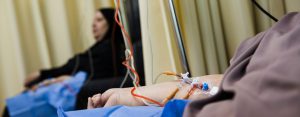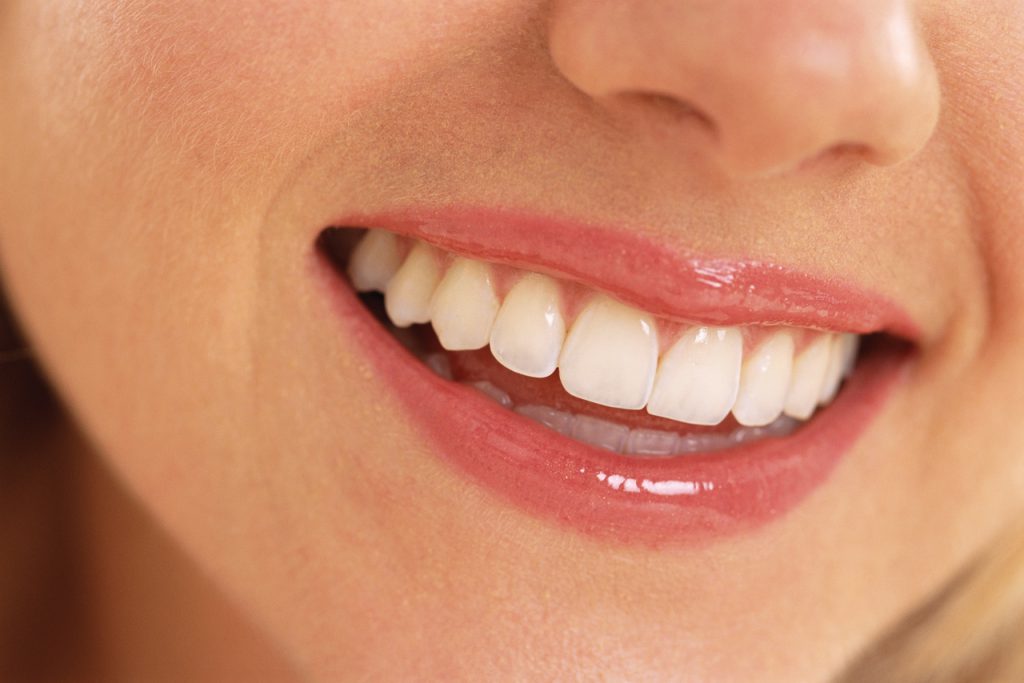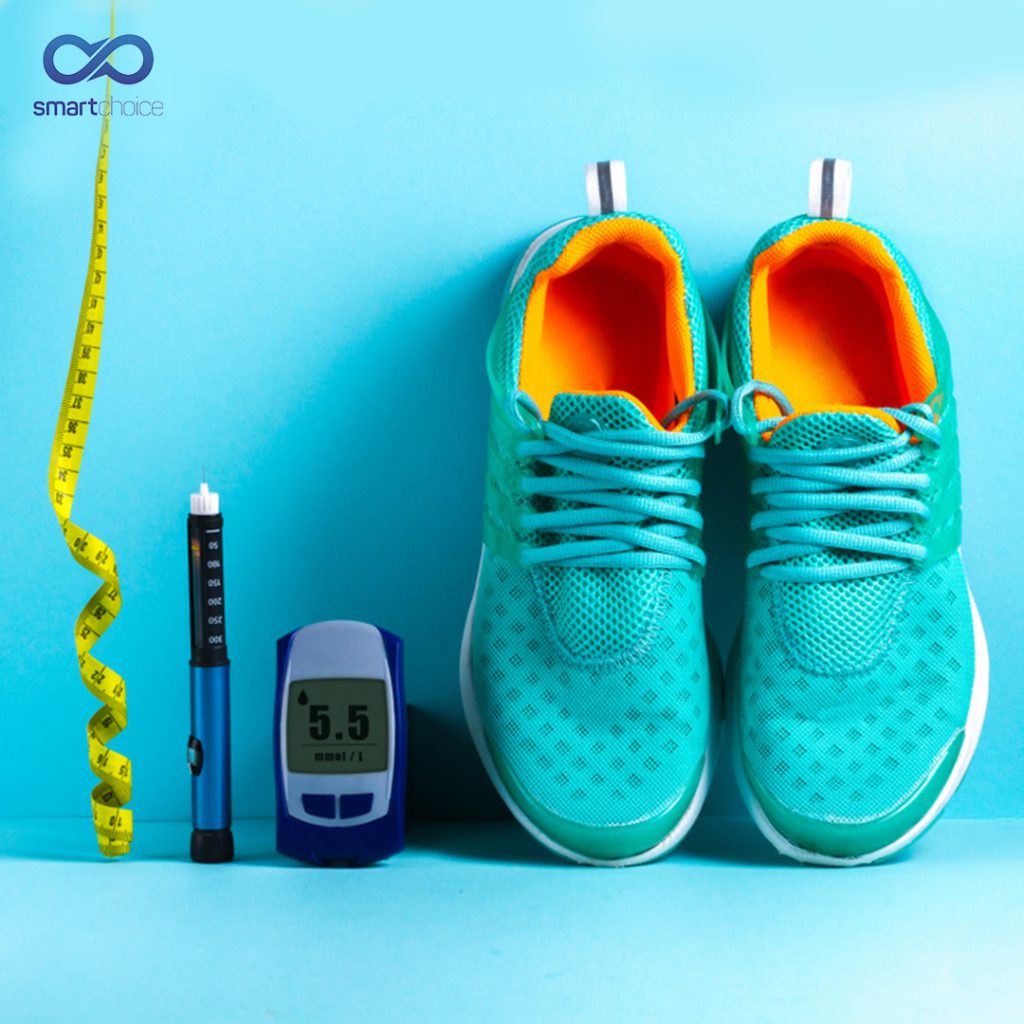Around 140,690 cancer cases were diagnosed in 2019 in Pakistan. In 2020 total numbers of cancer cases were 17,838 in which breast cancer cases are (14.5%), Lip and oral cavity is (9.5%), Lung cancer (5.9%), cancer of Oesophagus is (5.7%), and Colorectum is 4.8%. The total number of death cases is 117,149.
What is cancer?
Cancer is a disease in which abnormal cells grow and divide in the body without control and invade the tissues. The abnormal cells can destroy normal body tissues and cause cancer. It is a large group of diseases that can start in any organ or part of the body and spread to other organs. Cancer is the major cause of death, but the survival rate increases daily as improvement in screening, prevention, and treatment has become more advanced.
Our body is made of trillions of cells that multiply and grow to form new cells, and when these cells grow old, they die, and new cells take their place, but sometimes these cells grow and multiply and form a tumor (lumps of tissue). A tumor can be cancerous or noncancerous. A noncancerous tumor is a growth that doesn’t spread to other body parts; it is not life-threatening and can easily be removed with surgery. A cancerous tumor usually grows and spreads to other body parts and can be dangerous.
There are more than a hundred types of cancer. The type of cancer is named from the organ, e.g., brain cancer starts in the brain, lung cancer from the lungs. The risk of having cancer depends on your age, gender, and ethnicity, e.g., breast cancer most likely occurs in older-aged women, and prostate cancer affects men.
Cancer in Pakistan
The most common cancer that is found in Pakistan is
- Breast cancer
- Lung cancer
- Liver cancer
- Colorectal cancer
- Prostate cancer
- Head and neck carcinoma
Cancer Mortality in Pakistan
The mortality rate of cancer differs in males and females. Different types of cancer are found in males and females, some of which are discussed below according to their mortality rate.
Cancer in Male
According to the survey, around 48,600 males died due to cancer, in which the percentage of the following type of cancer is high.
- Mouth, oropharynx: 12.3%
- Trachea, bronchus, lung: 10.5%
- Lymphomas, multiple myeloma: 8.4%
- Leukemia: 5.5%
- Liver: 5.5%
- Other: 57.8%
Cancer in Female
According to the survey, around 52,500 females died due to cancer, in which the percentage of the following type of cancer is high.
- Breast 30.8%
- Mouth and oropharynx 7.9%
- Cervix uteri: 5.5%
- Ovary 5.1%
- Oesophagus 4.8%
- Others: 46.0%
Signs and Symptoms of Cancer
-
Tiredness
If you feel extreme tiredness without any reason and that doesn’t get better with the rest of many days, you must go for a medical checkup, as it may be one of the signs of cancer.
-
Weight Loss
If you feel your weight is lost without any diet food and suddenly lose 10 pounds weight in a month for no reason, this must be an alarming sign.
-
Eating Problems
If you don’t feel hungry after a long hour break, or you may feel belly pain, vomiting, difficulty in swelling, and nausea, this may be a significant symptom of cancer disease.
-
Swelling
If you find swelling in one or more parts of your body, cancer cells may grow.
-
Hair loss
If you feel excessive hair loss despite taking care and using hair loss oil and shampoo, you must go for a medical checkup and find out the exact cause.
-
Pain
If you found pain in any of your body parts that last longer and don’t go with any of the pain killers, then there must be something fishy, and you must diagnose the cause.
-
Blood in Urine or Stool
If bleeding occurs on passing urine or stool, you may have bladder cancer; a particular test can diagnose this.
When to See a Doctor
Make an appointment with a doctor if you feel any signs and symptoms, and if you are afraid about the risk of cancer, then discuss with your doctor, your doctor will guide you about cancer screening tests and procedures that are suitable for you.
Causes of Cancer
There are many possible causes of cancer among them. Some of the reasons are described in which genetics and environmental factors are discussed.
-
Genetics and Cancer
Some types of cancer are found in families, which mean that an individual can inherit cancer risk from one of their parents, and it can be passed from one generation to another. Genetic testing can also identify your risk of cancer.
-
Lifestyle and Environmental Factors
The environment contains many harmful and physical agents that increase cancer risk. Certain chemicals are found in your workplace, e.g., benzene and asbestos. Pollution and household exposures are also environmental factors that increase cancer risk. Certain lifestyle changes such as smoking, alcohol, drinking more than one glass a day, exposure to the sun, being fat, and unsafe sex can increase cancer risk. However, you can lower your risk of cancer by changing these habits. The highest alcohol consumption can lead to liver cancer, and alcohol use has also shown an increased risk of cancer in the mouth, larynx, liver, stomach, colon, and ovaries. Studies have shown that people who chew betel nuts are at risk of oral cancer. Around the world, almost 3.5% of deaths are due to alcohol consumption, and a total of 90%of cancer cases are caused by lifestyle and environmental factors.
-
Diet and Obesity
Some foods are directly related to cancer formation. Research has demonstrated that people who eat red meat regularly has shown a risk of breast cancer, pancreatic cancer, and prostate cancer. Studies have also shown that when foods are cooked at high temperatures also increases the chance of cancer.
Many types of cancer are caused by obesity, including colorectal cancer, endometrial cancer, esophageal adenocarcinoma, kidney cancer, thyroid cancer, pancreatic cancer, and breast cancer. According to research, excess weight can produce many types of cancer, and around 4.8% death rate is increased in Pakistan because of obesity. Physical activity and eating a healthy, rich diet plays a significant role in cancer prevention.
The dietary recommendation for cancer prevention includes green vegetables, fresh fruits, fish, whole grain, and avoidance of animal fats, red meat, and refined carbohydrates.
-
Your Health Condition
Some chronic conditions such as ulcerative colitis may increase your risk of developing cancer. If you have any chronic illness that is not subsiding with medicines, you may consult your doctor.
-
Infection and Virus
Around the world, 18% of cancer cases are because of infectious diseases like viruses, bacteria, and parasites. The viral infection causes cervical and liver cancer, and a virus that causes cancer is named oncovirus. Research has shown that several viruses can cause cancer. e.g., the human papillomavirus (HPV) can cause cervical cancer, and hepatitis C causes liver cancer
-
Radiation
High energy radiation, e.g., UV light, gamma rays, and X-rays, is the most harmful radiation that causes cancer. Studies have suggested that prolonged exposure to UV light radiation from the sunlight can lead to skin cancer. According to the World Health organization, the radiation from cell phones and electric power is also harmful.
Prevention of Cancer
Early detection and prevention of cancer are more important nowadays. Research has shown that 50% of deaths can be preventable with knowledge today. You can make choices for your health. Following are some preventive measures that every individual must follow for cancer prevention.
1- Avoid Tobacco
The use of tobacco consumption should be restricted to every individual. Tobacco has shown many types of cancer that include lungs, mouth, throat, cervical, and esophagus. 90% of lung cancer is because of smoking
2- Protect your Skin from Sun
Exposure to UV light from the sun can cause skin cancer. Skin cancer is widespread and most preventable, but more deaths are in skin cancer. Around 96,400 people are diagnosed with skin cancer. There are specific ways in which you will protect your skin from sunlight:
- Wear Sunglasses
- Wear long sleeves and pants for protection from UV light.
- Apply sunscreen every 2 hours.
- Find shade and shelter for yourself to avoid skin damage, e.g., umbrella or tree.
- Wear a hat, and woven fabric works best for the protection of UV rays
- Avoid outdoor activity in the middle of the day (10:00 am to 4:00 pm). The UV rays are strongest during this time.
3-EAT A HEALTHY DIET
Eat a healthy, rich diet with lots of fiber, fruits, beans, whole grains, and fresh green vegetables is the perfect diet for preventing many diseases. Avoid red meat and alcohol consumption as alcohol increases the risk of liver cancer.
4-Be Physically Active
Being overweight and inactivity can lead to cancer. Getting at least 30 minutes of the daily walk can help you maintain your health and weight. Daily exercises also boost your immune system, increase energy, maintain your weight, and reduce the risk of cancer.
6-GET IMMUNIZED
Proper immunization reduces your risk of cancer. A virus that causes cancer can be preventable through hepatitis B and hepatitis C vaccines. Around one-third of liver cancer is caused by hepatitis B and C virus. Effective vaccination against these viruses is the most preventive measure for any age group.
7-Know your Family Medical History and get Regular Cancer Screening
If any person in your family is diagnosed with cancer, you must go for the cancer screening test. A screening test is for early detection of cancer and can save lives. The cancer treatment is most likely successful when early detection is possible.
Cancer Diagnosis
Your doctor may suggest you follow test for cancer diagnosis
-
Physical Exam
Your doctor examines abnormalities such as organ enlargement and skin color changes that detect the risk of cancer.
-
Laboratory Tests
Specific laboratory tests such as blood and urine tests may reveal an unusual number of WBCS.
-
Imaging Tests
The doctor will examine your internal organs and bones through CT, MRI, PET, X-ray, and ultrasound.
-
Biopsy
A biopsy is a definitive way to diagnose cancer. A doctor collects a sample of cells in the laboratory and examines it under a microscope.
Treatment of Cancer
The cancer treatment will depend on the type of cancer you have. Some people with cancer need only one treatment, while most people require a combination of treatments, e.g., surgery with radiation and Chemotherapy. It is normal to feel stressed and overwhelmed during cancer treatment but learning and talking with your doctor about the type of treatment can help you feel more comfortable. Following are some standard treatments for cancer patients in Pakistan:
- Mammography
- Radiotherapy
- Chemotherapy
- Hormonal therapy
- Targeted therapy
- Immunotherapy
- Surgery
-
Mammography
Mammography is used to diagnose breast cancer by using X-rays of low energy. Mammography detects cancer in the early stage. Some women feel pain in x-ray treatment, while others only feel pressure or discomfort against their breast, which is normal.
-
Radiotherapy
Radiotherapy is performed through radiation therapy that kills cancer cells. Radiotherapy is the most effective treatment after surgery. Radiotherapy is used to:
- Cure cancer completely
- It can be combined with Chemotherapy to make treatment more effective
- Reduce cancer risk
- Relieve cancer symptoms if the cure is not possible.
-
Chemotherapy
Chemotherapy treatment uses drugs for killing cancer cells. It works by slowing or stopping cancer growth and reducing the chance of cancer. Chemotherapy is a standard treatment used in many types of cancer treatment. Many people need only Chemotherapy for cancer prevention. The type of treatment will depend on the type of cancer, the spread of cancer, and other health problems. Chemotherapy is used with other cancer treatments and when it is used with other treatments because it can:
- Destroy cancer cells that spread to other body parts
- Before radiation therapy or surgery, the Chemotherapy makes a tumor smaller
- Chemotherapy works better with other treatment
-
Hormonal Therapy
Hormones are natural substances made by glands in our bodies. They act as messengers between one part of our body to another. Hormones are also responsible for the growth of our cells. Hormone therapy stops or slows the growth of cancer and eases cancer symptoms. Hormone therapy uses medicines to lower hormones in your body and prevent cancer growth.
-
Targeted Therapy
Targeted therapies are drugs that target particular parts of cancer cells, such as genes or proteins that help cancers grow. Targeted therapies work better with many other types of cancer treatments. Targeted therapy only works if cancer growth is on the right target.
-
Immunotherapy
Immunotherapy treatment helps your immune system to fight body infections and other diseases. It is a biological therapy that destroys abnormal cells and prevents cancer growth. Immunotherapy uses substances made in a laboratory to improve your immune system and destroy cancer cells. Immunotherapy therapy is not used with Chemotherapy, radiation therapy, and surgery.
-
Surgery
Surgery is a procedure where the surgeon directly removes cancer from your body. Surgery is used to:
- Remove the entire cancerous area
- Surgery removes some cancer tumors. (this can be done when removing the whole area damage other organs of the body)
- Surgery eases cancer symptoms that cause pain and pressure
Goals of Cancer Treatment
The treatment of cancer has many objectives. Some of which are described:
-
Cure
Cancer treatment aims to provide a cure for cancer patients, allowing them to live a normal life.
-
Primary Treatment
The primary treatment is to kill the cancer cells from our bodies completely. The most common immediate treatment is surgery.
-
Adjuvant Treatment
The adjuvant therapy kills cancer cells that remain after the primary treatment. Adjuvant treatment includes Chemotherapy, hormone therapy, and radiation.
-
Palliative Treatment
Palliative treatment relieves signs and symptoms caused by cancer itself. Medications may also relieve symptoms such as shortness of breath and pain.
Conclusion
Cancer prevention and treatment plan are crucial factors for cancer control. Our main goal is to cure cancer patients or provide them with a good quality of life. To diagnose and cure cancer early, an awareness program should educate people and other communities.




